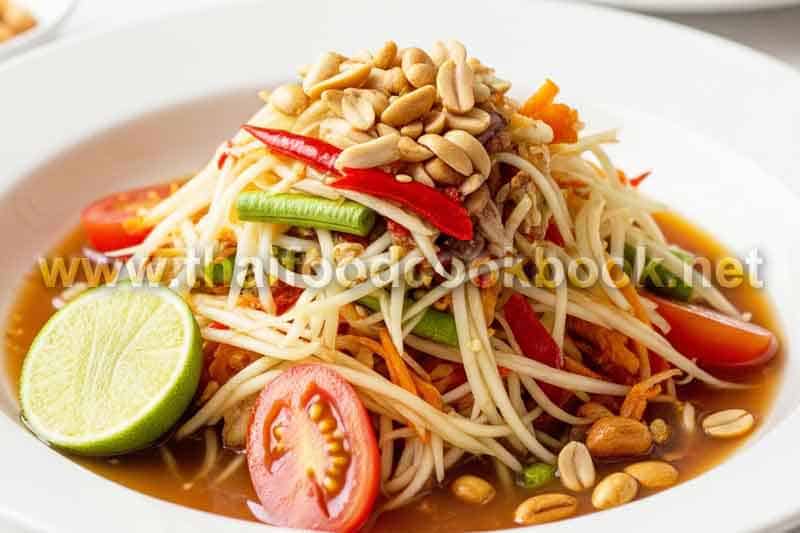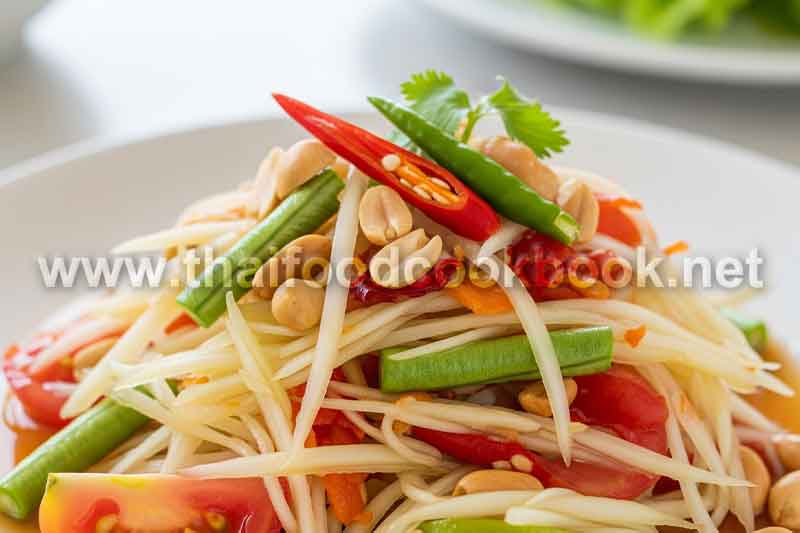Thai Dessert Recipe: Classic Thapthim Krop “Water Chestnut Rubies” – Your Guide to Authentic Thai Sweetness
Craving an exotic, refreshing dessert but unsure where to start? Many enthusiasts of Thai cuisine struggle to recreate the authentic flavors of beloved traditional sweets at home. The delicate balance of textures and tastes in Thai desserts, particularly something as iconic as Thapthim Krop, can seem daunting. But imagine mastering this vibrant dish, impressing your guests, or simply indulging in a homemade taste of Thailand whenever you desire! This comprehensive guide provides the precise steps and insights you need to confidently prepare authentic Thai Thapthim Krop, transforming your kitchen into a hub of culinary adventure. We’ve meticulously analyzed what makes this dessert a favorite and distilled the process into an accessible, rewarding experience.
Unveiling the Secrets of Thai Water Chestnut Dessert: Thapthim Krop Explained
Thapthim Krop, affectionately known as “Water Chestnut Rubies,” is a quintessential Thai dessert, celebrated for its unique texture and refreshing qualities. This vibrant sweet treat features crunchy water chestnuts dyed a brilliant red, coated in tapioca flour, and served in a sweet, fragrant coconut milk syrup, often with crushed ice. It’s a symphony of textures and flavors – the satisfying crunch of the “rubies” contrasting with the creamy, subtly sweet coconut milk. Understanding the core components is key to mastering this delightful Thai dessert.
What Makes Thapthim Krop a Beloved Thai Sweet Treat?
The allure of Thapthim Krop lies in its captivating visual appeal and refreshing taste. It’s a popular choice, especially in Thailand’s warm climate, offering a cooling respite. The preparation, while seemingly intricate, is a rewarding process that yields a truly unique dessert experience.
Exploring the Origin and Popularity of Water Chestnut Rubies
Thapthim Krop’s origins are deeply rooted in Thai culinary traditions, showcasing the Thai ingenuity in transforming simple ingredients into exquisite creations. Its widespread popularity stems from its delightful texture, vibrant color, and the refreshing escape it offers on a hot day. This is truly a must-try for anyone exploring authentic Thai desserts.
Essential Ingredients for Authentic Thapthim Krop: Crafting Your Own Thai Rubies
To create the perfect Thapthim Krop, selecting high-quality ingredients is paramount. Each component plays a crucial role in achieving the desired texture, color, and flavor profile. From the water chestnuts to the fragrant pandan leaves, every item contributes to the dessert’s authentic taste. Here’s what you’ll need to gather:
Water Chestnut Rubies Ingredients Checklist:
Getting your ingredients right is the first step to successful homemade Thapthim Krop. Don’t compromise on freshness, as it directly impacts the final texture and flavor.
Main Components for Thai Rubies:
These are the stars of your Thapthim Krop, providing the signature crunch and vibrant color.
- Fresh Water Chestnuts: Approximately 2 cups, peeled and diced into small, even pieces (about 0.5-1 cm cubes). Fresh water chestnuts provide the best crunch; canned can be used but may be softer.
- Red Food Coloring: A few drops, to achieve that signature ruby red hue.
- Tapioca Flour: About 1 cup, for coating the water chestnut pieces. This is crucial for their translucent, chewy exterior.
- Water: For boiling the “rubies” and preparing the syrup.
Sweet Coconut Milk Syrup Ingredients:
The syrup is the soul of Thapthim Krop, infusing it with sweetness and aromatic notes.
- Coconut Milk: 2 cups (full-fat for richness).
- Sugar: ½ to ¾ cup, or to taste (granulated or palm sugar). Adjust based on your preference for sweetness.
- Pandan Leaves: 2-3 leaves, tied into a knot. Pandan imparts a beautiful, fragrant aroma that is characteristic of many Thai desserts.
- Salt: A pinch, to balance the sweetness and enhance the coconut flavor.
Garnish and Serving Suggestions:
These additions elevate the Thapthim Krop experience, adding extra layers of flavor and visual appeal.
- Crushed Ice: Essential for serving, making the dessert incredibly refreshing.
- Jackfruit Strips (Optional): Fresh or canned, adds a unique fruity aroma and subtle sweetness. This is a common addition to enhance the complexity of the dessert.
- Longan (Optional): Canned longan in syrup can also be added for extra sweetness and a different texture.
Step-by-Step Guide to Making Authentic Thapthim Krop at Home
Now that you have all your ingredients, it’s time to bring this beautiful Thai dessert to life. Follow these detailed instructions carefully to ensure your Thapthim Krop turns out perfectly – crunchy, vibrant, and utterly delicious. This process breaks down the creation of the water chestnut rubies and the fragrant coconut milk syrup.
Preparing Your Water Chestnut Rubies: The Core of Thapthim Krop
This is where the magic happens, transforming plain water chestnuts into those iconic ruby-like gems. Precision here ensures the right texture.
Dyeing and Coating the Water Chestnuts:
Achieving the perfect color and coating is crucial for the “ruby” effect. Tapioca flour is your best friend here.
- Prepare Water Chestnuts: Peel and finely dice the fresh water chestnuts into small, uniform cubes. Aim for pieces that are roughly 0.5 to 1 centimeter in size. Consistency in size ensures even cooking.
- Dye the Water Chestnuts: Place the diced water chestnuts in a bowl. Add a few drops of red food coloring. Start with a small amount and add more gradually until you achieve a vibrant ruby red color. Mix well to ensure all pieces are evenly coated.
- Coat with Tapioca Flour: Transfer the dyed water chestnuts to a shallow dish or a large zip-top bag containing the tapioca flour. Toss them gently to ensure each piece is thoroughly coated with flour. The flour should adhere well, creating a thin, even layer around each “ruby.” Shake off any excess flour.
Boiling and Chilling the Rubies:
This step sets the texture – from raw to perfectly chewy and translucent.
- Boil Water: Bring a pot of water to a rolling boil.
- Cook the Rubies: Carefully drop the coated water chestnuts into the boiling water. Do not overcrowd the pot; cook in batches if necessary.
- Wait for Floating: The rubies will sink initially. Once they float to the surface and become translucent (usually within 2-3 minutes), they are cooked.
- Chill Immediately: Using a slotted spoon, quickly transfer the cooked rubies to a bowl of ice-cold water. This stops the cooking process, maintains their crunchy texture, and prevents them from sticking together. Let them cool completely in the ice water, then drain well before serving.
Crafting the Aromatic Coconut Milk Syrup: The Perfect Companion
The syrup provides the creamy, sweet base that complements the crunchy rubies. The pandan leaves are key for that authentic Thai aroma.
Simmering for Sweetness and Fragrance:
Patience here yields a beautifully infused and balanced syrup.
- Combine Ingredients: In a saucepan, combine the coconut milk, sugar, and a pinch of salt.
- Add Pandan: Add the pandan leaves (tied into a knot to release more flavor) to the saucepan.
- Gentle Simmer: Heat over medium-low heat, stirring occasionally, until the sugar dissolves completely and the mixture is warm. Do not boil the coconut milk vigorously, as it can cause it to separate. Just a gentle simmer is sufficient to infuse the flavors.
- Cool the Syrup: Remove from heat and discard the pandan leaves. Let the coconut milk syrup cool completely before serving. You can even chill it in the refrigerator for a more refreshing dessert.
Serving Your Homemade Thapthim Krop: The Ultimate Refreshing Thai Dessert Experience
Once your water chestnut rubies are chilled and your coconut milk syrup is ready, it’s time to assemble and enjoy your classic Thai Thapthim Krop. This final step brings together all the elements for a truly delightful and refreshing experience. The presentation is as important as the taste for this vibrant dessert.
Assembling and Enjoying Your Water Chestnut Rubies Dessert:
Presentation matters! A well-composed bowl of Thapthim Krop is a treat for both the eyes and the palate.
Serving Suggestions for Thapthim Krop:
These tips ensure your Thapthim Krop is served at its best, maximizing its refreshing qualities and delightful textures.
- Prepare Serving Bowls: Have individual serving bowls ready.
- Add Crushed Ice: Fill each bowl generously with crushed ice. The ice is crucial for keeping the dessert cool and diluting the sweetness just enough.
- Add Rubies: Spoon a generous amount of the drained water chestnut rubies over the ice. The vibrant red will stand out against the white ice.
- Pour Coconut Milk Syrup: Ladle the chilled coconut milk syrup over the rubies and ice. Ensure there’s enough syrup to cover most of the rubies.
- Optional Garnishes: If desired, add strips of fresh or canned jackfruit for an extra layer of flavor and aroma. You can also include canned longan for additional sweetness and texture.
- Serve Immediately: Thapthim Krop is best enjoyed immediately after assembly to maintain the crunch of the water chestnuts and the coolness of the ice.
Tips for Perfect Thapthim Krop Every Time:
Achieving consistency and perfection with your “Water Chestnut Rubies” involves a few key considerations that can elevate your homemade version from good to exceptional. These insights help troubleshoot common issues and enhance the overall quality of this delightful Thai dessert.
Ensuring Crunchy Water Chestnut Rubies:
The texture of the water chestnuts is perhaps the most defining characteristic of Thapthim Krop. Here’s how to preserve that delightful crunch:
- Freshness is Key: Always opt for fresh water chestnuts if possible. Canned ones can work but might lack the crispness of fresh.
- Immediate Ice Bath: Transferring the cooked rubies directly into an ice bath is crucial. This immediate cooling halts the cooking process, preventing them from becoming mushy and ensuring they retain their desired crunch.
- Avoid Overcooking: Cook the rubies just until they float and become translucent. Overcooking will soften them significantly.
Achieving the Ideal Coconut Milk Syrup Consistency and Flavor:
The syrup should be creamy, sweet, and aromatic without being cloyingly rich.
- Full-Fat Coconut Milk: Use good quality, full-fat coconut milk for a rich and creamy syrup. Light coconut milk may result in a thinner, less satisfying texture.
- Gentle Simmering: When heating the coconut milk, only simmer it gently. Vigorous boiling can cause the coconut milk to separate or become oily.
- Pandan Infusion: Don’t skip the pandan leaves. Their unique, sweet aroma is essential for an authentic Thai flavor profile. Ensure they simmer long enough to release their fragrance.
- Taste and Adjust: Always taste the syrup and adjust the sugar and salt to your preference. A pinch of salt perfectly balances the sweetness.

